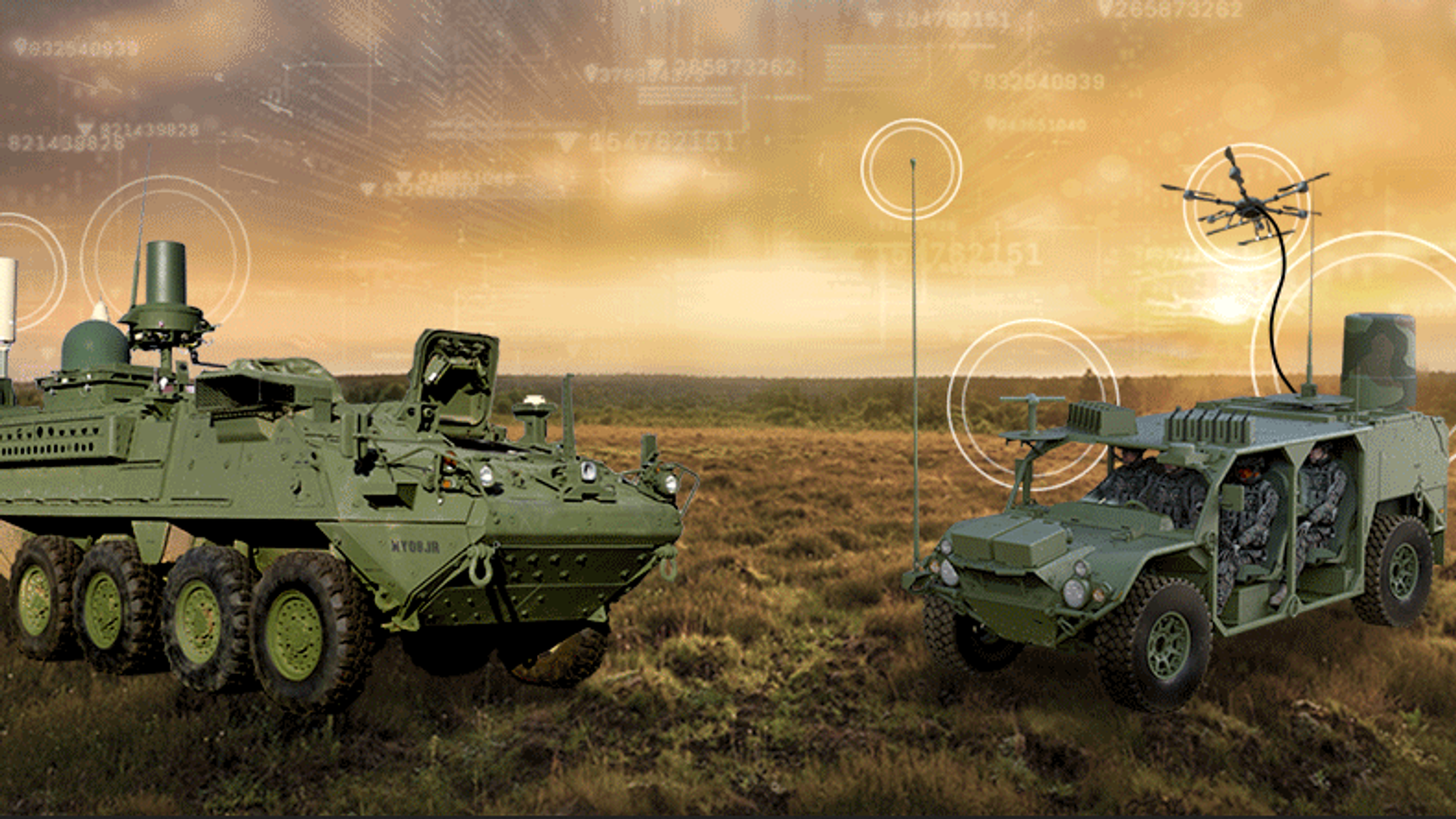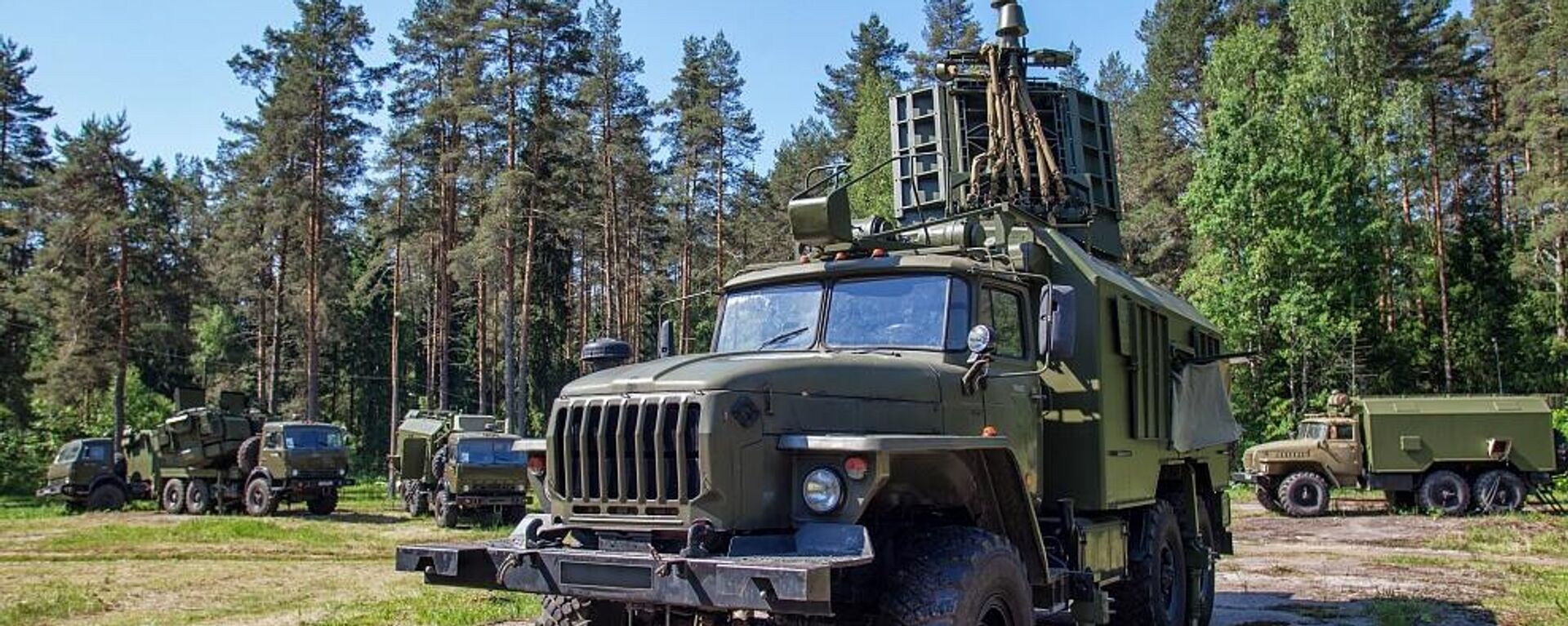https://sputnikglobe.com/20240514/ukraine-crisis-highlights-chasm-between-russian-us-electronic-warfare-capabilities-general-admits-1118424707.html
Ukraine Crisis Highlights Chasm Between Russian, US Electronic Warfare Capabilities, General Admits
Ukraine Crisis Highlights Chasm Between Russian, US Electronic Warfare Capabilities, General Admits
Sputnik International
Fighting between Russian and NATO-armed and trained Ukrainian and mercenary forces in Ukraine has busted an array of decades-old myths about the superiority of Western weaponry and military equipment to those of Russia. Perhaps nowhere is this more true than in electronic warfare – a field playing a decisive role on the modern battlefield.
2024-05-14T12:57+0000
2024-05-14T12:57+0000
2024-05-14T13:26+0000
military
ukraine
russia
military & intelligence
nato
us army
hudson institute
excalibur
electronic warfare system
electronic warfare
https://cdn1.img.sputnikglobe.com/img/07e8/05/0e/1118424516_38:0:827:444_1920x0_80_0_0_9aa06fe170652242d7ae0b32d7a08096.png
Retired US Army Lieutenant General and former spec ops commander Mike Nagata has sounded the alarm about the state of the US military’s electronic warfare capabilities, warning that America is “still falling behind” adversaries in this area in spite of its best efforts.“The US government, particularly its leadership – from senior military officers all the way to civilian policymakers – we have to be willing to take more risk in experimenting with, adopting and employing new technologies,” Nagata urged, referring to the unique challenges said to be posed by Russian electromagnetic jamming equipment.The retired senior officer’s sentiments were echoed by other officials at the conference, who complained about Russia’s leading edge in EW, matched by critical investments in electromagnetic jamming capabilities, compared to a US military electronic warfare effort which in recent decades has been focused on intelligence gathering in low-intensity conflicts against weaker powers.Nagata’s pessimistic assessment was matched by Hudson Institute senior fellow Daniel Patt in a recent written testimony to Congress. Patt warned in March that the Russian military’s fine-tuning of its electronic warfare systems had resulted in a 62 percent drop in the effectiveness of the 155 mm GPS-guided Excalibur artillery shells sent to Ukraine – from 70 percent to six percent.Russia’s EW CapabilitiesThe extent of the gap between Russian and NATO electronic warfare capabilities became glaringly clear through the course of the proxy war in Ukraine, a ghoulish endeavor into which the Western alliance has sunk tens of billions of dollars of its most advanced military equipment – including an array of guided missile, drone, and communications systems.Over the past two years, Russia’s electronic warfare forces have proven increasingly apt at jamming everything from the aforementioned guided artillery shells and JDAMs, to long-range drones, missiles, aircraft, and even commercial satellite constellations providing support for Ukraine’s military.Russia’s Armed Forces have recognized the changing face of warfare, including electronic warfare, through the course of the Ukraine crisis, adapted accordingly, and aren't resting on their laurels, Russian military observers say.Electronic warfare has been a Russian strong suit going back to the mid-20th century and the Soviet military doctrine’s emphasis on the “total integration of electronic warfare and physical destruction resources” on the battlefield, which resulted in the creation of an array of short, medium, long, and ultra-long range electronic warfare systems. Russia capitalized on and expanded these capabilities through timely investments to improve these systems from the mid-2000s onward.
https://sputnikglobe.com/20240403/watch-russias-tetrahedron-electronic-warfare-system-being-tested-in-special-op-zone-1117715348.html
https://sputnikglobe.com/20240511/russias-electronic-warfare-creates-problems-for-us-precision-weaponry-in-ukraine---reports-1118382017.html
https://sputnikglobe.com/20240415/second-to-none-how-russia-masters-its-electronic-warfare-1117947049.html
ukraine
russia
Sputnik International
feedback@sputniknews.com
+74956456601
MIA „Rossiya Segodnya“
2024
News
en_EN
Sputnik International
feedback@sputniknews.com
+74956456601
MIA „Rossiya Segodnya“
Sputnik International
feedback@sputniknews.com
+74956456601
MIA „Rossiya Segodnya“
how strong are us electronic warfare capabilities, is us behind russia in electronic warfare
how strong are us electronic warfare capabilities, is us behind russia in electronic warfare
Ukraine Crisis Highlights Chasm Between Russian, US Electronic Warfare Capabilities, General Admits
12:57 GMT 14.05.2024 (Updated: 13:26 GMT 14.05.2024) Fighting between Russian and NATO-armed and trained Ukrainian and mercenary forces in Ukraine has busted an array of decades-old myths about the superiority of Western weaponry and military equipment to those of Russia. Perhaps nowhere is this more true than in electronic warfare – an area playing a decisive role on the modern battlefield.
Retired US Army Lieutenant General and former spec ops commander Mike Nagata has sounded the alarm about the state of the US military’s electronic warfare capabilities, warning that America is “still falling behind” adversaries in this area in spite of its best efforts.
“The gap between where the United States should be and where we are, in my judgement, continues to expand not everywhere, but in far too many places,” Nagata said at a Special Operations Forces Week conference in Tampa, Florida.
“The US government, particularly its leadership – from senior military officers all the way to civilian policymakers – we have to be willing to take more risk in experimenting with, adopting and employing new technologies,” Nagata urged, referring to the unique challenges said to be posed by Russian electromagnetic jamming equipment.
The retired senior officer’s sentiments were echoed by other officials at the conference, who complained about Russia’s leading edge in EW, matched by critical investments in electromagnetic jamming capabilities, compared to a US military electronic warfare effort which in recent decades has been focused on intelligence gathering in low-intensity conflicts against weaker powers.
Nagata’s pessimistic assessment was matched by Hudson Institute senior fellow Daniel Patt in a recent written testimony to Congress. Patt
warned in March that the Russian military’s fine-tuning of its electronic warfare systems had resulted in a 62 percent drop in the effectiveness of the 155 mm GPS-guided Excalibur artillery shells sent to Ukraine –
from 70 percent to six percent.“We’re looking at many variants, looking for redundancy,” an anonymous US official told Defense One, pointing to American efforts to increase the mobility of its systems to prevent effective enemy counteraction. “You’ll see some offerings in the next few months coming out… Gone are the days that we used to operate SATCOM from a fixed location. We are now extending that to a moving platform on the way to the objective, which is really changing the landscape of how we do communications,” the official said.
The extent of the gap between Russian and NATO electronic warfare capabilities became glaringly clear through the course of the proxy war in Ukraine, a ghoulish endeavor into which the Western alliance has sunk tens of billions of dollars of its most advanced military equipment – including an array of guided missile, drone, and communications systems.
Over the past two years, Russia’s electronic warfare forces have proven increasingly apt at jamming everything from the aforementioned guided
artillery shells and JDAMs, to long-range
drones,
missiles,
aircraft, and
even commercial satellite constellations providing support for Ukraine’s military.
Russia’s Armed Forces have recognized the changing face of warfare, including electronic warfare, through the course of the Ukraine crisis, adapted accordingly, and aren't resting on their laurels, Russian military observers say.
“Electronic warfare equipment is evolving. If earlier, this equipment would protect large formations, today we’re talking about these devices being practically individualized – to suppress drones and so on. Today, their production is becoming cheaper and they are seeing a mass appearance on the battlefield,” Nikolai Kostikin, an expert from the Moscow-based Bureau of Military-Political Analysis think tank, told Sputnik last week.
Electronic warfare has been a Russian
strong suit going back to the mid-20th century and the Soviet military doctrine’s emphasis on the “total integration of electronic warfare and physical destruction resources” on the battlefield, which resulted in the creation of an array of short, medium, long, and ultra-long range electronic warfare systems. Russia capitalized on and expanded these capabilities through timely investments to improve these systems from the mid-2000s onward.





